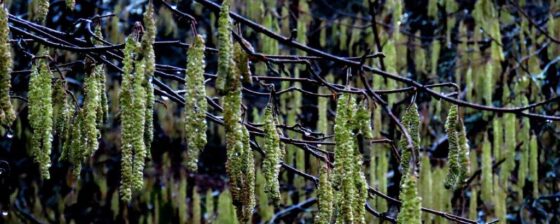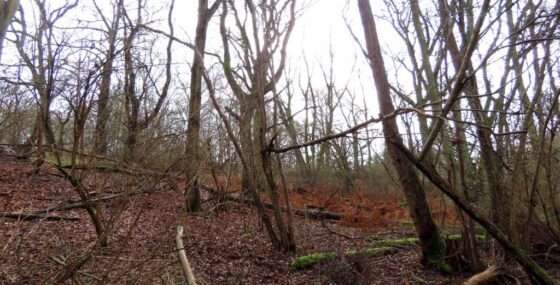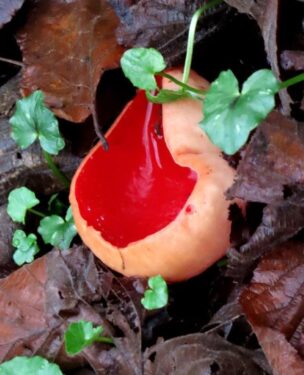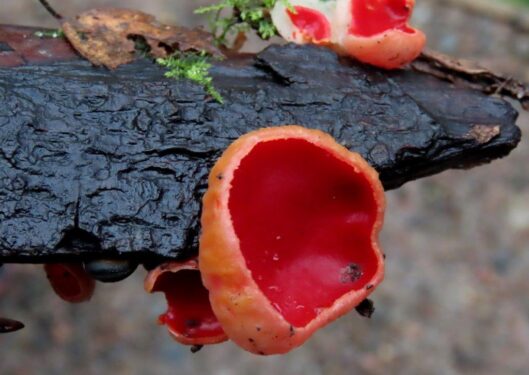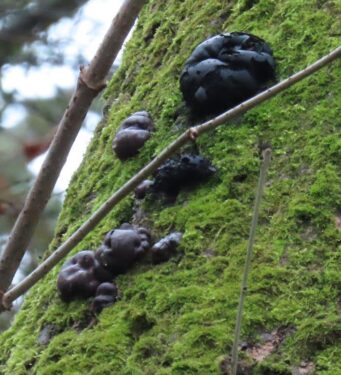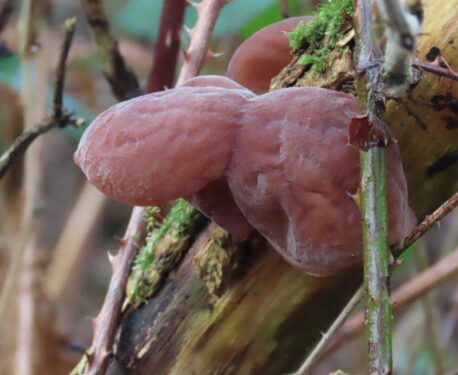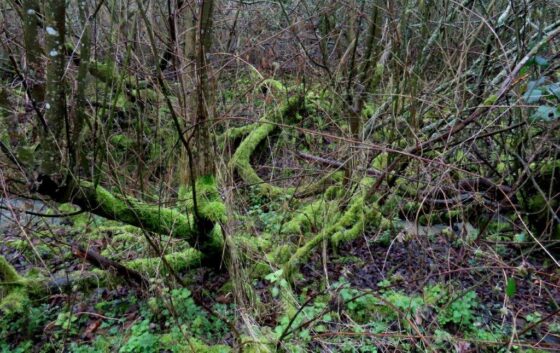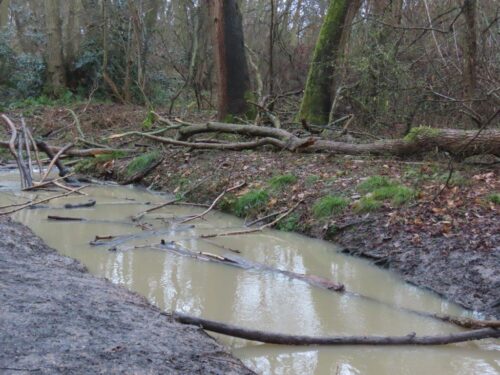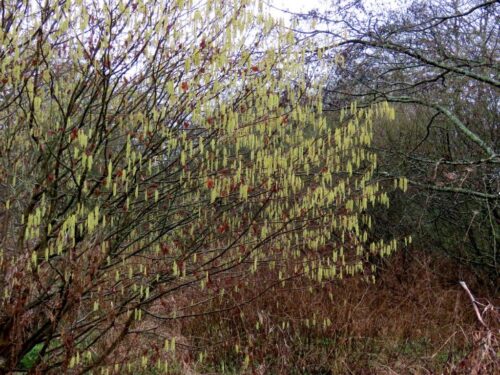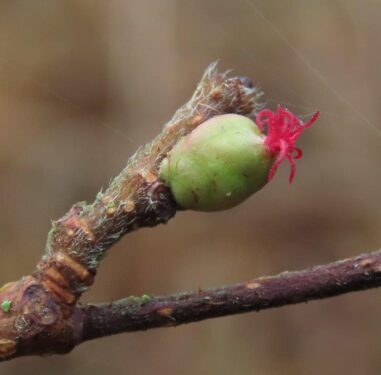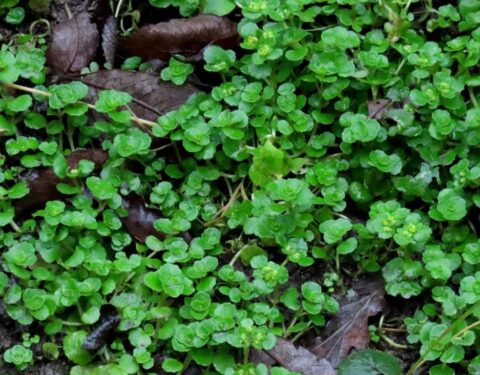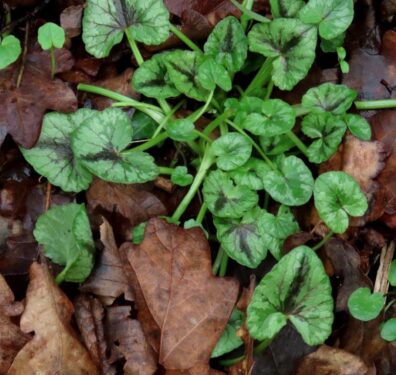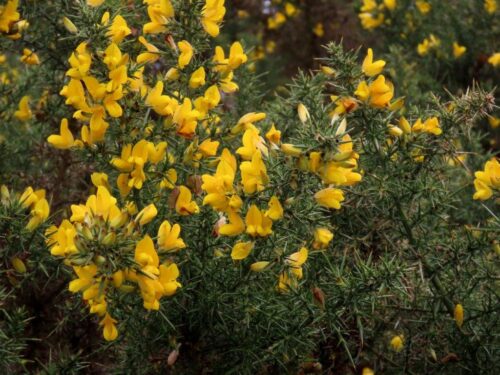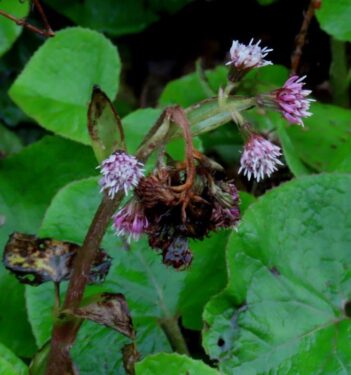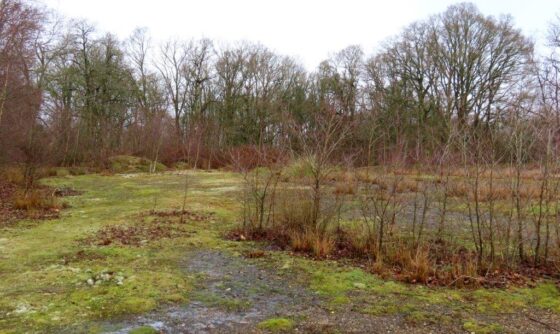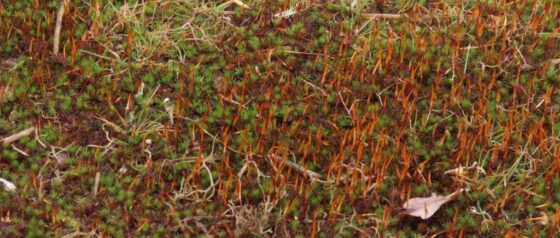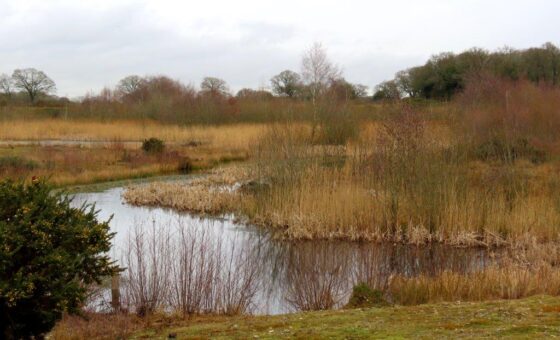We went in search of Elves and were certainly not disappointed!
Our first walk of the year, to Cockaynes Reserve, was a most enjoyable event. We got off to a rather damp start but the rain soon stopped and the sun came out – it was so nice to have the chance to catch up with some of our old friends in this familiar and well-loved place. This time all proceeds are going to the Save the Old King George Oak appeal and we would like to thank everyone for their contributions – all monies now forwarded via the Crowdfunder page. If you would like to read Chris’ wise words about this whole shenanigans you can via his blog Saving Wivenhoe’s Old King George Oak Tree | Chris Gibson Wildlife.
And so to the Elves (rather the Scarlet Elf-cup fungus) – wow, what a wonderful display this year! Many times more than we have ever seen in the past 14 years of living in Wivenhoe- indeed possibly since Chris first found them here in 1986. Unsure why – maybe the disturbance caused by the remaking of the path a couple of years managed to spread the spores, or the damp spring has just made their existence more viable? Whatever the reason they were a joy to behold, and seemingly spreading to previously Elf-free sections of Villa Wood. A truly iconic species for this reserve.
And these were not the only fungi to be found. Turkey-tails and Maze-gills were on rotting stumps and King Alfred’s Cakes and Jelly Ears on Ash and Elder trees respectively.
Within the lush mossy greenscape alongside Sixpenny Brook (running very muddy after the overnight heavy rain), there were flowering Hazel bushes, male tassels in abundance, while Jude found one plant in which the little red female flowers were just emerging. There were also Lesser Celandines (some with beautifully marked leaves, variegated in both black and silver) and the first Opposite-leaved Golden-saxifrages in flower, always good to see as a sign that Spring is just around the corner.
Elsewhere, plant-wise it was a pleasure to see Gorse in full flower (well, kissing IS in season 😉), Winter Heliotrope on the side of Ballast Quay Lane, as well as early-flowering Red-Dead-nettles and Common Field Speedwells, as well as the tentative spikes of Bluebell and Wild Arum leaves pushing up.
Out on the heathy areas, it was too early for flowers, but the spore-capsules of the Juniper Haircap moss made for a splendid vista among the Reindeer Lichens.
Spring was in the air with bird life at every turn including flocks of Goldfinches, Linnets and Chaffinches, and Skylarks singing along the path up to the reserve; while there at least three Song Thrushes serenaded us, plus Wrens, Robins and a Chiffchaff (the first we have heard this year – so early in the season it must have stayed here all winter, rather than migrating as they did of old). Mixed bands of Great, Blue and Long-tailed Tits rampaged through the woods and scrub, and generally gave the impression of Nature waking up in anticipation of Spring!
We feel we have well and truly kicked off our Wild Essex season and look forward to the next event next month (bird watching starting at Manningtree Co-op).
